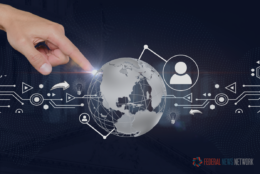Commentary
-
The LLM should be as close to seamlessly integrated into the software tools used as possible, for data creation and management, ensuring that compliance checks and classifications are part of the natural workflow.
February 22, 2024 -
The BOP has huge responsibilities in the care and feeding of over 150,000 prisoners in its care and over 36,000 staff. It has an $8.7 billion annual budget and houses some of the most infamous criminals in the United States. It also houses nearly 50,000 inmates who are low and minimum-security prisoners, many of whom are eligible for earlier release due to the First Step Act.
February 21, 2024 -
As we approach the April 2024 expiration of Section 702 of the Foreign Intelligence Surveillance Act (FISA), it is heartening to see a robust debate in Congress on how the U.S. government and its commercial…
February 20, 2024 -
The clock is ticking for the current administration to implement measures to protect science and the workers dedicating their lives to confronting this millennium’s greatest challenge: preserving our planet, its resources and its people.
February 19, 2024 -
Trust is a complicated issue, and while improving the ‘digital experience’ citizens have with government websites and apps isn’t a panacea, it will go a long way toward restoring faith By Rob Hankey
February 16, 2024 -
Linda Miller, the founder and CEO of Audient Group, LLC and a former deputy executive director of the Pandemic Response Accountability Committee, explains why Congress needs to act now to create a centralized antifraud office within Treasury with the tools to prevent fraud and establish antifraud funding for new and emergency programs to give them the ability to combat fraud from the start.
February 15, 2024 -
Strategic changes will preserve not just the Postal Service’s core mission but also an industry that accounted for fully 7% of US GDP in 2022, and the millions of jobs it supports.
February 14, 2024 -
As we navigate a landscape of evolving threats and heightened security needs, integrating AI-driven solutions in federal facilities is not just a forward-thinking move but a necessary evolution.
February 13, 2024 -
Jason Weiss, the chief operating officer of TestifySec and a former chief software officer for the Defense Department, explains why agencies need to change their approach to securing software and cloud services, FedRamp
February 12, 2024 -
Thanks to the executive order, 2024 will be a year when not only does AI adoption accelerate but so do initiatives to govern it.
February 08, 2024 -
Trey Hodgkins, a long-time federal procurement expert and now senior vice president at Phoenix Strategies, a government affairs firm, delves into what the recent artificial intelligence executive order means for federal contractors.
February 07, 2024 -
Mature AI technology blurs the line between a human and a bot.
February 05, 2024 -
On January 25, 2024, the Office of Management and Budget (OMB) issued a memo to Chief Acquisition Officers and Senior Procurement Executives
February 02, 2024 -
The way you start to build a zero trust architecture is to work with the three horizontal pillars to define and restrict the protected surfaces around the data. If you can break into my IT architecture but cannot get to the data, I win; I’m not happy, but I still won. The answer is to reduce the protected surface for the data. Smaller is easier to manage and protect.
February 02, 2024 -
This decision, coming in the wake of a lawsuit filed in August 2023, demonstrates a responsiveness to the evolving needs and rights of all veterans.
January 31, 2024















